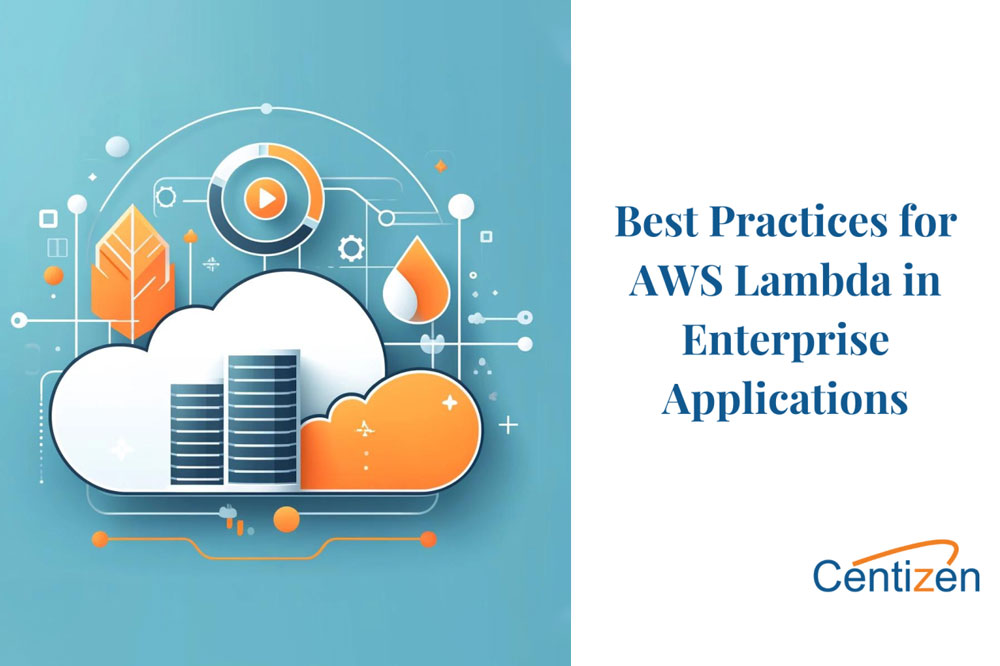Best Practices for AWS Lambda in Building Enterprise-Level Applications

AWS Lambda is a powerful service that allows developers to run code without provisioning or managing servers. It automatically scales applications by running code in response to triggers from other AWS services or HTTP requests via Amazon API Gateway. Building enterprise-level applications with AWS Lambda requires following best practices to ensure performance, scalability, security, and cost-effectiveness.
Best practices for AWS Lambda
1. Optimize cold start performance
Cold start latency occurs when a new container is initiated to handle a request. Here are ways to minimize cold start times:
- Keep functions warm: Use scheduled events (e.g., CloudWatch Events) to periodically invoke Lambda functions, keeping them warm.
- Provisioned concurrency: Use provisioned concurrency to keep functions initialized and ready to handle requests immediately.
- Optimize initialization code: Reduce the initialization code to the bare minimum required to handle the request.
2. Efficient resource management
- Memory allocation: Allocate memory efficiently. More memory means more CPU, which can speed up execution but also increase costs. Use AWS Lambda Power Tuning to find the optimal memory setting.
- Use layers: Share common libraries and dependencies across multiple functions using AWS Lambda layers.
- Environment variables: Store configuration settings in environment variables rather than hardcoding them into your code.
3. Security best practices
- IAM roles and policies: Assign minimal IAM roles and policies necessary for the Lambda function to perform its tasks. Follow the principle of least privilege.
- Encryption: Encrypt sensitive data, both in transit and at rest. Use AWS KMS for encryption.
- VPC integration: For secure data access, configure Lambda functions to run inside a VPC with appropriate security groups and subnet settings.
- Code signing: Use AWS Signer to ensure that only trusted code is deployed.
4. Monitoring and logging
- CloudWatch logs and metrics: Enable detailed logging and monitoring using Amazon CloudWatch. Create custom metrics and set up alarms for critical thresholds.
- Distributed tracing: Use AWS X-Ray to trace requests and visualize the end-to-end workflow of your application.
- Structured logging: Use structured logging (e.g., JSON format) to make logs easier to search and analyze.
5. Error handling and retries
- Built-in retries: Leverage AWS Lambda’s built-in retry mechanism for asynchronous invocations. Configure the maximum retry attempts and dead-letter queues (DLQs) for failed events.
- Graceful error handling: Implement graceful error handling within your code to manage and log errors appropriately without crashing the function.
6. Performance optimization
- Event source mapping: Use batch window and batch size settings for event source mappings (e.g., SQS, Kinesis) to process records efficiently.
- Caching: Use Amazon ElastiCache or DynamoDB Accelerator (DAX) to cache frequent read requests and reduce latency.
- Use step functions: For complex workflows, use AWS Step Functions to coordinate multiple Lambda functions and maintain state.
7. Cost management
- Optimize execution time: Optimize the code to run as quickly as possible. Review and profile your Lambda functions regularly to identify bottlenecks.
- Use reserved concurrency: Limit the number of concurrent executions to control costs and avoid exceeding the free tier limits.
- Monitor usage: Use AWS Cost Explorer and Budgets to monitor Lambda usage and set cost alerts.
8. Versioning and aliases
- Versioning: Use versioning to manage updates to Lambda functions. Each deployment can be saved as a new version, allowing you to roll back if needed.
- Aliases: Use aliases to manage different environments (e.g., dev, staging, production). Aliases can point to specific function versions and can be updated without affecting the underlying function code.
9. Compliance and auditing
- Compliance checks: Use AWS Config and AWS Security Hub to ensure your Lambda functions comply with organizational policies and standards.
- Auditing: Enable CloudTrail logs to audit API calls and detect unusual activity.
10. Scalability and resilience
- Concurrency controls: Manage concurrency limits to ensure that your application scales appropriately without overwhelming downstream resources.
- Backup and recovery: Implement automated backups for critical data using services like AWS Backup, and ensure your architecture supports disaster recovery.
Conclusion
By adhering to these best practices, you can build robust, scalable, secure, and cost-effective enterprise-level applications using AWS Lambda. Continuous monitoring, regular performance tuning, and staying updated with the latest AWS features and improvements are crucial to maintaining the efficiency and effectiveness of your Lambda-based applications.
Explore Centizen Inc’s comprehensive staffing solutions, custom software development and innovative software offerings, including ZenBasket and Zenyo, to elevate your business operations and growth.
Centizen
A Leading IT Staffing, Custom Software and SaaS Product Development company founded in 2003. We offer a wide range of scalable, innovative IT Staffing and Software Development Solutions.
Contact Us
USA: +1 (971) 420-1700
Canada: +1 (971) 420-1700
India: +91 63807-80156
Email: contact@centizen.com
Our Services
Products
Contact Us
USA: +1 (971) 420-1700
Canada: +1 (971) 420-1700
India: +91 63807-80156
Email: contact@centizen.com






